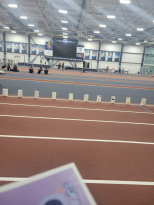Beyond pom-poms: Cheerleading should be regulated as a sport
Cheerleading has always been dangerous, and I have the injuries to prove it: concussion, two elbow ligament tears and countless sprains and bruises.
As sophomore in high school on the varsity squad, I was still new to doing intricate stunts. Stunts are maneuvers in which one or more “bases” supports one or more “flyers” off the ground. I was the flyer, the person who is elevated or tossed in the air by a base, so I had to rely not only on myself but also on the bases below me to ensure my safety.
We were trying a new opening stunt for our routine and I remember thinking, “I’m not sure if I can do that or not, but if I have to, I guess I’ll give it a try.” I bent my knee at the wrong time and before I knew it I was falling to the ground putting my arms out in front of me to try and break my fall, and no one could grab my upper body in time.
I hyperextended my elbow, which then led to a tear in a ligament, and I could not straighten my arm for days.
A year later, in warm-ups before the State Championship competition in Johnstown, I suffered another fall and tore the same ligament—in the opposite arm. And I will never forget about the time in middle school that I was actually dropped on the back of my head, leaving a goose egg the size of a golf ball and a concussion that kept me out for weeks.
A few weeks ago, the American Academy of Pediatrics (AAP) came out with new guidelines to help regulate high school cheerleading.
The AAP has realized that cheerleading has evolved into a very dangerous athletic activity. Previously, people have viewed cheerleading as cheering on teams from the sidelines while shaking pom-poms. The activity is now turning into a yearlong sport, which consists of fast-paced floor routines, gymnastic-style tumbling and complex stunts, such as building up pyramids and throwing athletes in the air, all the while a hard-floor surface awaits below.
The AAP suggests that parents, coaches and school officials put into place emergency plans and to make sure that the cheerleading squad has the same level of qualified coaches, medical care and injury examination as other sports.
Cheerleading continues to grow as a sport. In 2009, the National Federation of State High School Associations reported that there were around 400,000 high school cheerleaders, and 123,000 of those were a part of competitive teams.
Only 29 state high school athletic programs recognize cheerleading as a sport and the National Collegiate Athletic Association (NCAA) does not have competitive cheerleading as a sponsored sport.
The injuries from competitive cheerleading are monumental, however, which is why the AAP is looking for a change in the regulations.
Any sort of “stunting” is considered doing lifts or pyramids. The most common mechanisms of injury are basing/spotting (23 percent), tumbling (14–26 percent), and falls from heights (14–25 percent). Stunting accounts for 42 percent to 60 percent of all cheerleading injuries and 96 percent of concussions and closed-head injuries. Pyramid stunts are responsible for the majority of head and neck injuries (50–66 percent).
To increase safety, the AAP recommends requiring coach training and certification, proper strength and conditioning for all cheerleaders, and avoiding stunts and tumbling on hard surfaces.
The AAP made 12 recommendations that high schools should follow when it comes to cheerleading.
Cheerleading should be designated as a sport and physical exams should be given prior to the cheerleading season. A qualified and trained coach should supervise the team, and cheerleaders should also be trained in proper spotting techniques. With that being said, technical skills should not be performed on hard surfaces, partner stunts should only be performed on a spring floor, and pyramids should be no more than two people high.
Coaches should follow rules at all times, and make sure that a written emergency plan goes into effect in case an accident occurs. Any person showing signs of head injury should be removed from practice immediately and surveillance should continue. Finally, all venues need to be approved prior to any sort of practice taking place.
My high school cheerleading coach was a Universal Cheerleading Association (UCA) staff member. I had to get a physical before the season started and we had conditioning every week. Yet, I still managed to sustain common injuries. Regulating cheerleading is a good idea, because then every team will get the attention and recognition from the school for proper care.
At the end of the day, even with these guidelines in place, injuries are still going to happen. We cannot walk through life with bubble wrap around us and expect not to get injured.
Should there be regulations in place? Yes. Accidents will happen, but maybe they won’t be so severe.







